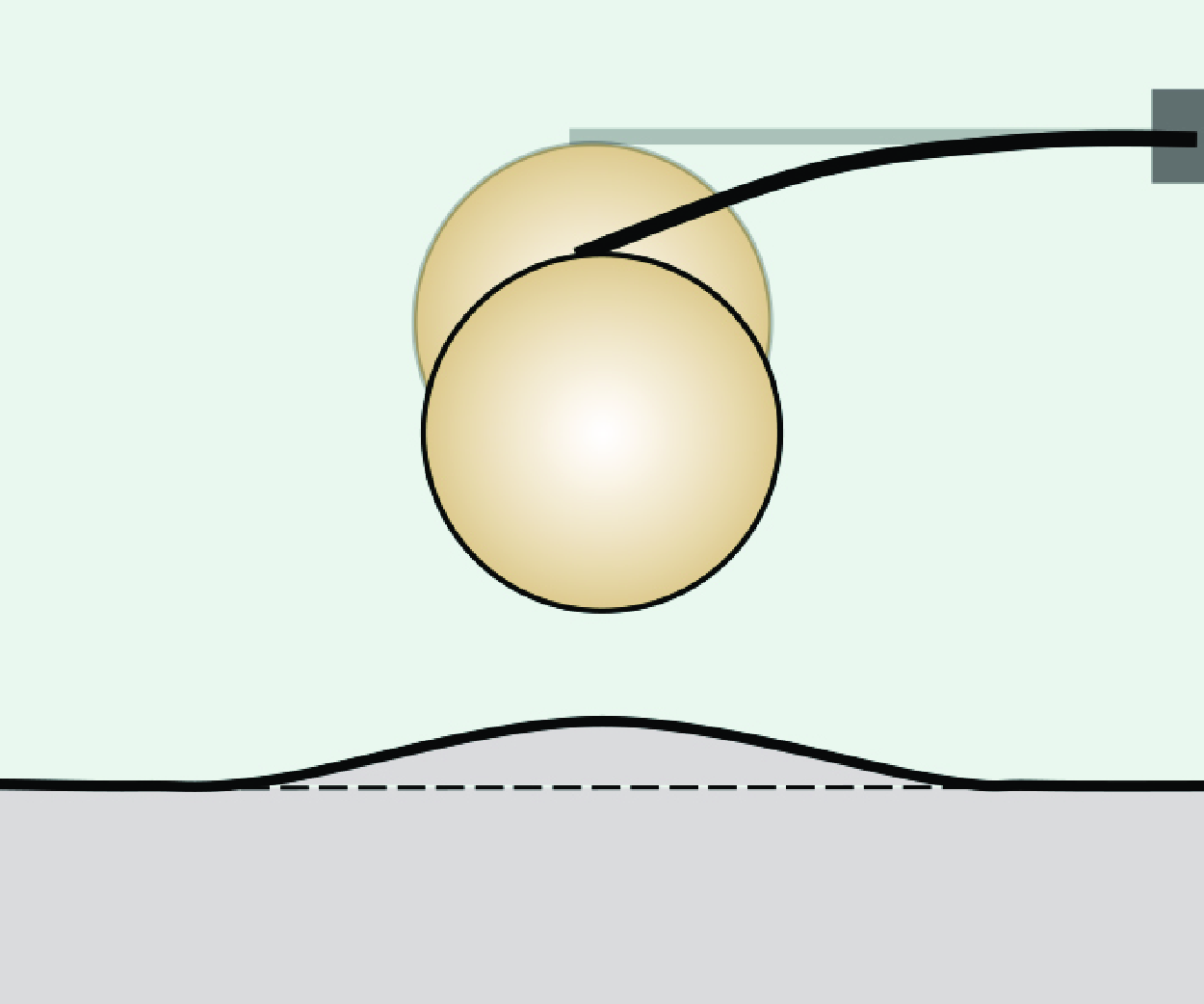Article contents
Jump of an atomic force microscopy probe towards an elastic substrate in a liquid environment
Published online by Cambridge University Press: 24 June 2025
Abstract

In typical atomic force microscopy (AFM) measurements, the AFM probe, mounted on a compliant cantilever, is brought into close proximity to the test substrate. At this range, interfacial attractive van der Waals (vdW) forces can deflect the cantilever by pulling the probe, often causing the probe to suddenly jump into contact with the substrate. For deformable substrates such as gels or bio-tissues, the attraction-induced substrate deformation can further reduce the gap beneath the probe, which can increase the vdW force and hence trigger jump-to-contact prematurely. Since soft gels and tissues are frequently tested in liquid environments, where surface tension and the approaching dynamics of the probe can significantly influence deformation behaviour, this study examines the statics and dynamics of jump-to-contact on elastic substrates incorporating the effect of solid surface tension. We first discuss the theoretical setting for the static problem, deriving perturbation solutions for limiting cases of small and large solid surface tension. Notably, even under conditions of large solid surface tension, elasticity remains critical, as far-field elastic forces are required to smooth surface deformations in a convergent manner. Recognising that practical experiments are inherently dynamic, we also analyse the role of hydrodynamic pressure, which can delay the premature jump-to-contact. Our analysis focuses on identifying the conditions under which dynamic effects are negligible, enabling the simple analytical solutions in the static problem to reliably interpret AFM experimental results.
Information
- Type
- JFM Papers
- Information
- Copyright
- © The Author(s), 2025. Published by Cambridge University Press
References
- 1
- Cited by


